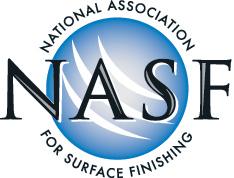| Presented in Partnership with: | |||
 |
 |
 |
 |
Search Results
The 44th William Blum Lecture, Electrodeposition of Alloys and Composites with Superior Corrosion and Electrocatalytic Properties
Author: Prof. Branko N. Popov
Issue: , 2004Tremendous potential exists for the growth of the metal finishing industry in this century through the development of processes that are either environmentally friendly or are applicable at the nanoscale. The chemical composition and the structure of electrodeposited metals, alloys and composites control their functional properties. This paper will discuss some of the theoretical and experimental studies done to achieve such coatings. Nanostructured alloys and innovative composite materials were developed through adaptation of existing bath chemistries. Process development was based on techniques developed in our laboratories such as: under potential deposition (UPD) of monoatomic metal layers, autocatalytic reduction and potentiostatic pulse (PP) plating of layers of amorphous and crystalline nanostructured metals and alloys. The development processes have been optimized based on obtaining superior corrosion and electrocatalytic properties. Further refinement of the coating process was achieved through the development of first principles based theoretical models.
 |
 |
 |
 |
 |
| Home | Subscribe | Regulations | Compliance Assistance | News | Resources | Resource Locators | Directories | Online Training | About | Search | Contact | NASF.org |
The information contained in this site is provided for your review and convenience. It is not intended to provide legal advice with respect to any federal, state, or local regulation.
You should consult with legal counsel and appropriate authorities before interpreting any regulations or undertaking any specific course of action.
Please note that many of the regulatory discussions on STERC refer to federal regulations. In many cases, states or local governments have promulgated relevant rules and standards
that are different and/or more stringent than the federal regulations. Therefore, to assure full compliance, you should investigate and comply with all applicable federal, state and local regulations.
